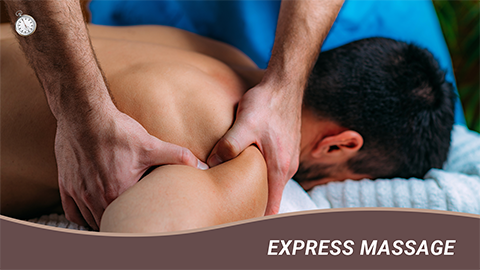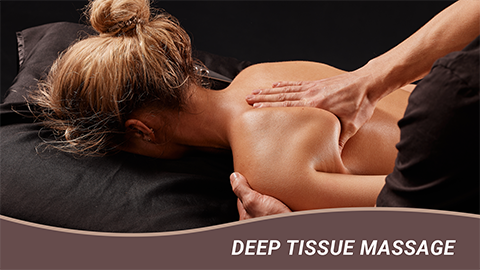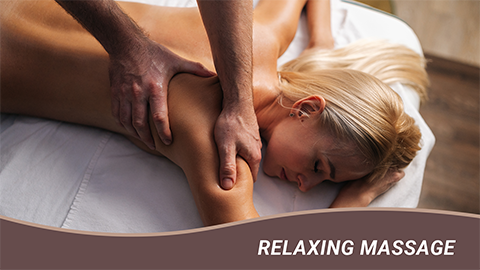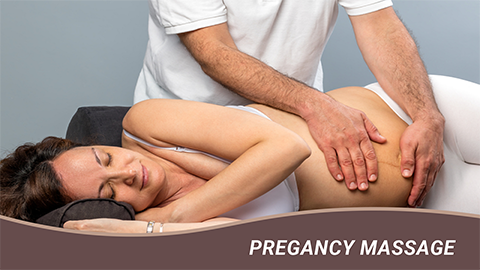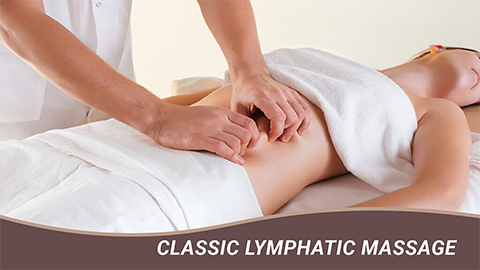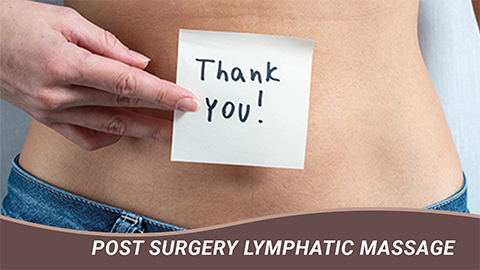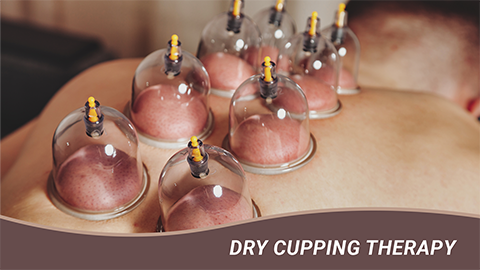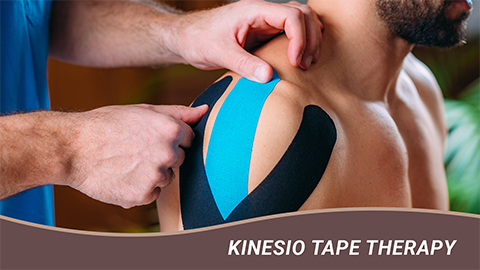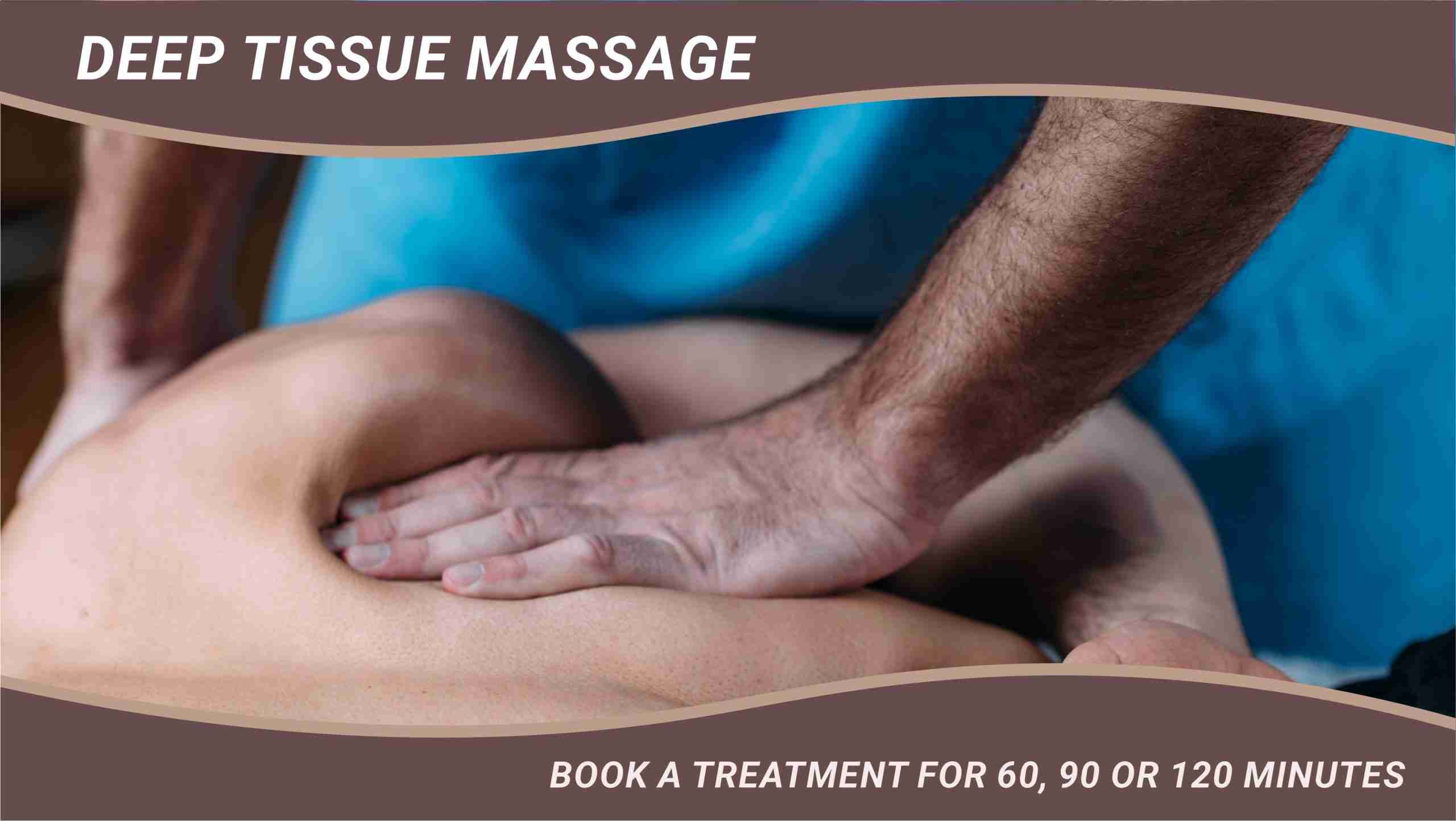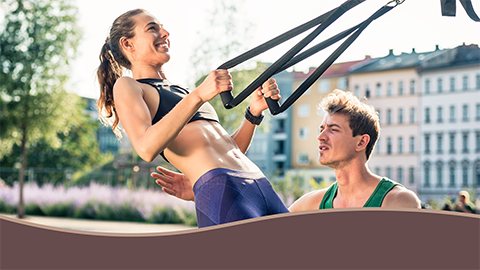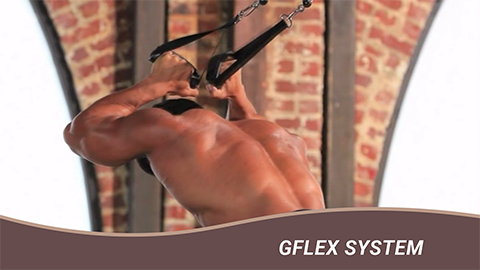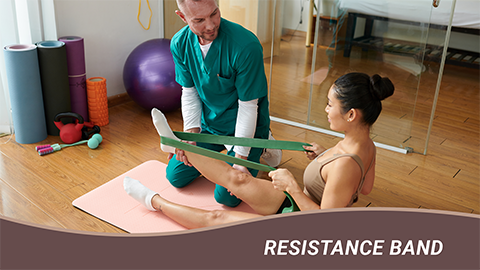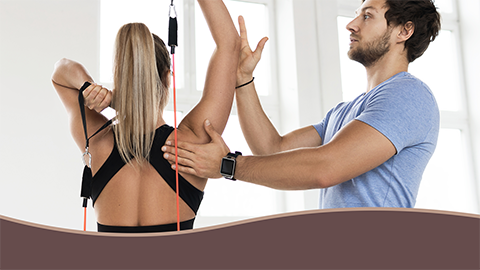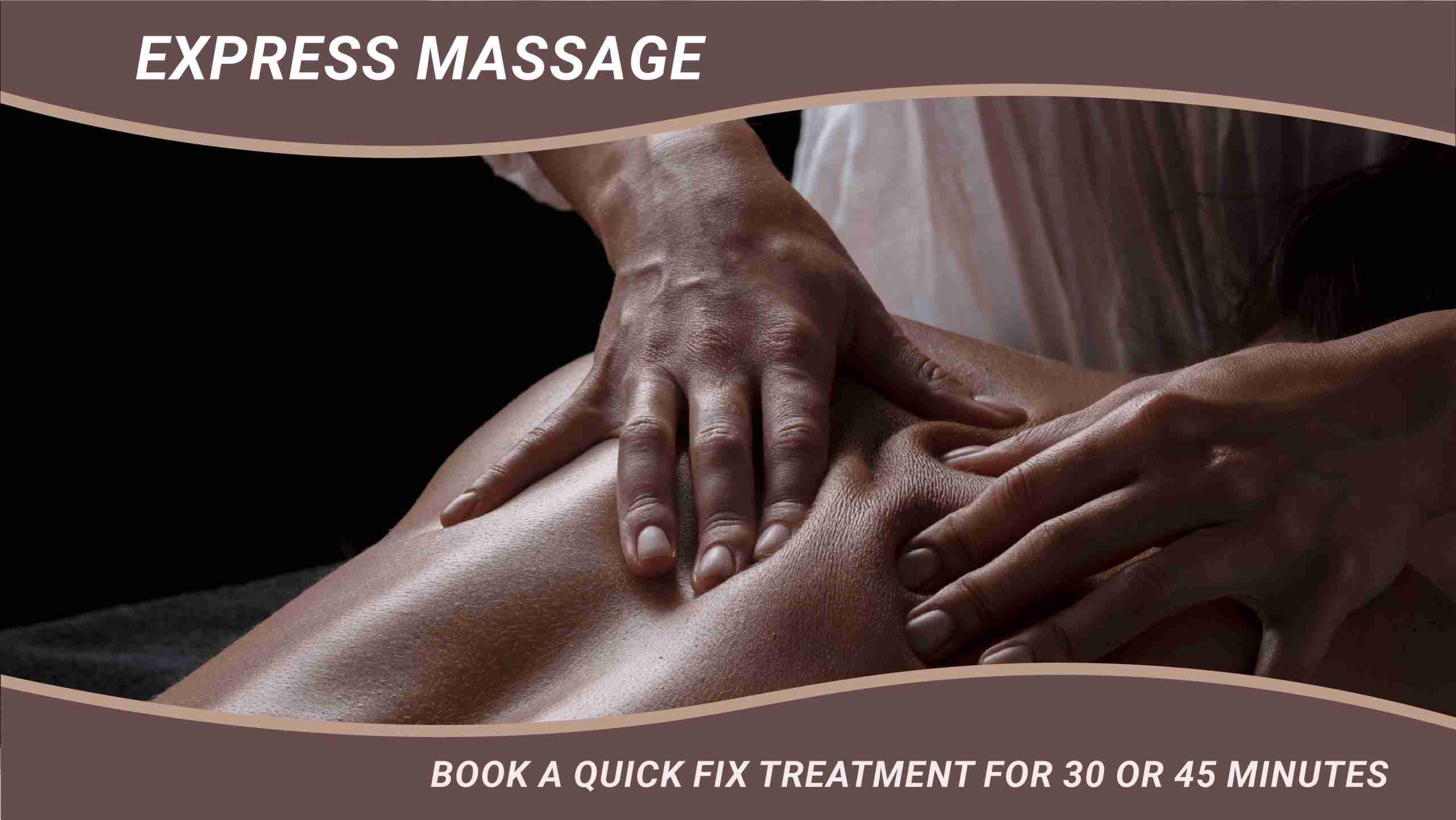
Express Massage
Quick and Perferct Emergising Treatment!
An excellent option for quickly relieving sudden muscle pain or easing movement difficulties that hinder your important tasks. This treatment focuses on the rapid and effective resolution of problems in one or two areas, helping to release tension.
It does not replace therapeutic treatment!
Book in urgent cases and experience the benefits of an express massage in just 30 or 45 minutes!
Express Massage...Read more
Why Choose the Express Massage?
Time-Efficient Solution
Quick Treatment: Experience significant relief in just 30 or 45 minutes.
Fits Your Schedule: Easily fit it into your lunch break, after work, or between meetings.
Immediate Stress Relief
Rapid Tension Relief: Quickly reduces stress and tension.
Enhanced Well-Being: Even a short massage improves mood and mental clarity.
Effective Pain Relief
Targeted Treatment: Focuses on specific problem areas for fast pain relief.
Muscle Tension Relief: Effectively reduces muscle tightness and strains.
Value for Money
Higher Price Justified: Immediate relief and effectiveness make it worth the cost. You won’t be out of work for long.
Personalized Attention
Individual Needs: The therapist focuses on your specific issues, whether it’s back pain, neck stiffness, or general relaxation.
High-Quality Service: Receive top-notch care even in a short time frame.
The express massage is an ideal choice if you’re looking for a quick and effective solution for stress, tension, and muscle pain relief. The time efficiency, immediate stress reduction, and targeted treatment are all benefits that make this quick treatment worthwhile. Don’t wait, experience the advantages of an express massage and enjoy quick relief in your busy life!
Deep Tissue Massage
Intensive Solution for Deeper Muscle Tension
This specialized technique focuses on relieving tightness in muscles and deeper tissues. It helps alleviate chronic tension and reduces pain, especially in the back, neck, and shoulder areas. This massage uses slow, deep pressures that reach the deeper muscle layers and connective tissues. It is ideal for those struggling with intense muscle pain or who engage in sports and seek a deeper therapeutic effect.
Book an appointment for a 60, 90, or even 120 minutes intensive treatment.
Deep Tissue Massage...Read more
Techniques and Hand Movements: The therapist uses slow, deep pressures, frictions, and kneading movements to penetrate the deeper layers of muscles and fascia. These movements help to uncover and release muscle knots and tension points. During the massage, the therapist often uses their fingers, palms, elbows, and forearms to apply the appropriate pressure.
Who is it recommended for?
Deep tissue massage is particularly recommended for athletes, physically active individuals, and those who subject their muscles to repetitive strain, such as office workers who spend a lot of time sitting. It is also excellent for those struggling with chronic pain, such as back, neck, or shoulder pain, or those living a stressful lifestyle. For example, if you are a marathon runner who regularly engages in intense training, or a musician who practices for hours, deep tissue massage can help with muscle recovery and tension reduction.
Specific Issues it Helps With:
Deep tissue massage can provide relief for various specific issues. These include muscle pain and stiffness, chronic back pain, sciatica, fibromyalgia, sports injuries, and repetitive strain injuries such as tennis elbow or carpal tunnel syndrome. It is also recommended for general postural problems. It is beneficial for reducing pain caused by poor posture and for releasing deeper muscle layers.
For instance, if you are an office worker who often experiences pain and stiffness in your shoulders and neck from long hours of sitting, deep tissue massage can help alleviate these symptoms and improve your posture.
Important Information and Contraindications
Before booking a deep tissue massage, it’s crucial to be aware of some basic information and contraindications. Deep tissue massage can be intense and may involve some discomfort, but the pain should be tolerable. It is important for the client to always communicate if the pain becomes too severe.
This type of massage is not recommended for acute injuries, inflammation, infections, bleeding disorders, and certain cardiovascular diseases. If you are pregnant or have any serious health issues, consult your doctor before opting for a deep tissue massage.
Client Responsibilities Post-Treatment
After the treatment, it is important for you to aid in your recovery. Rest, drink plenty of water to help flush toxins from your body, and avoid excessive physical exertion for a few days post-treatment. Additionally, performing light stretching exercises can help keep your muscles flexible and prevent further tension.
Possible Post-Treatment Symptoms
It is important to note that post-massage, you may experience muscle soreness in the treated area, and your skin may become more sensitive. This is normal and typically subsides within a few days. If the pain is severe or persists for an extended period, please inform me using the provided contact details.
In cases of chronic muscle adhesions or muscles damaged from overuse, deep tissue massage can sometimes result in mild, unexpected bruising, which may appear a few hours or even a day after the treatment. In very rare cases, these symptoms can manifest as larger hematomas. These are more likely to occur in individuals with sensitive or thinner skin. The bruises initially appear dark blue, gradually turning greenish, then yellow before fading away. More details about this can be found on my website.
I want to reassure you that these are natural reactions of the body to the treatment of deeper muscle layers. Typically, the marks are not dangerous and will be absorbed within a few days. However, if you experience any unusual symptoms, prolonged pain, or swelling in the affected area, please inform me and consult your doctor.
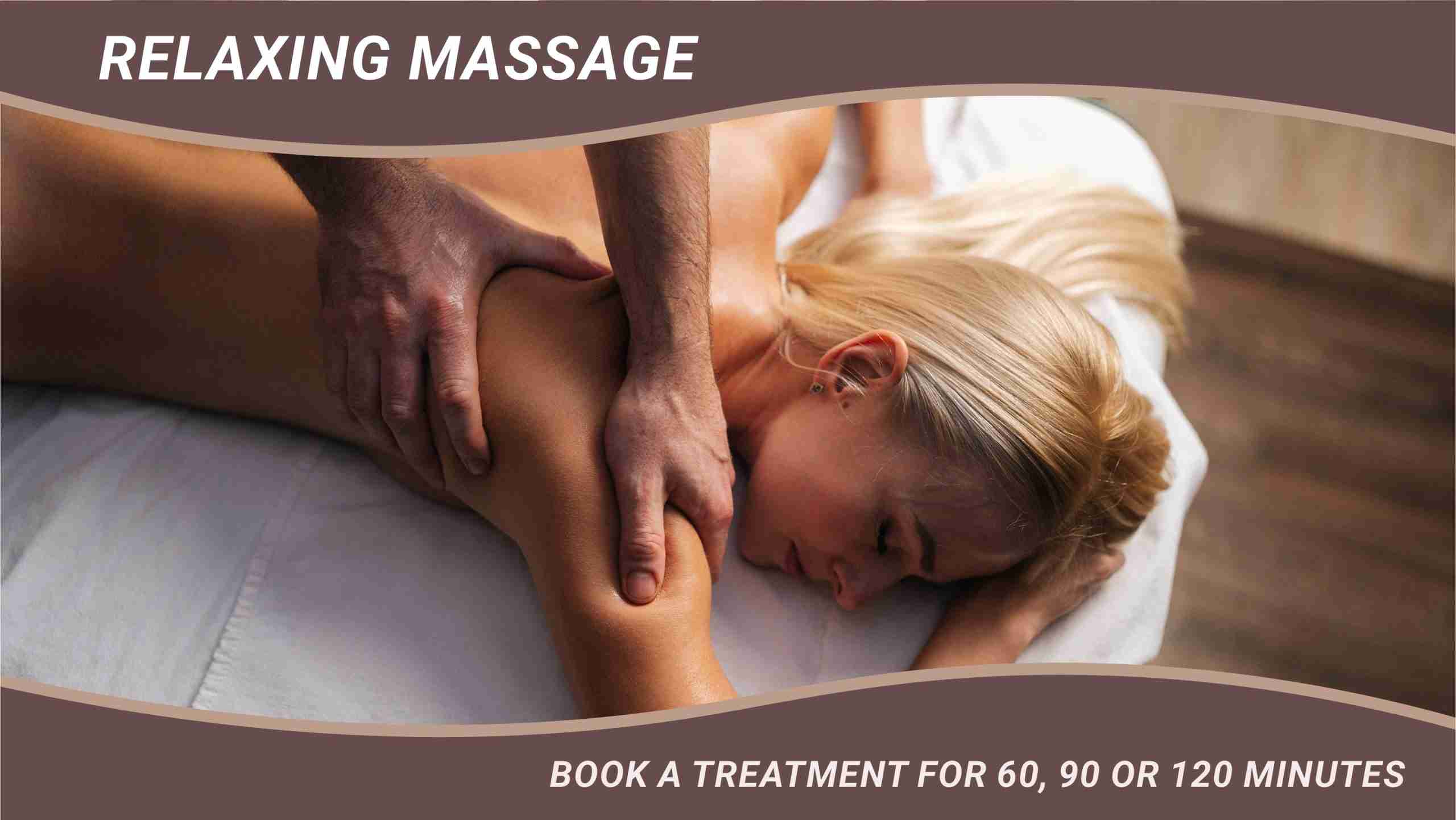
Relaxing Massage
The Experience of Complete Relaxation and Stress Relief
Have you ever felt, after or during a stressful day, that your muscles are so tense from stress that you just want to relax on a massage bed? This is the ideal choice for those who want a bit of peace, perhaps with soft music in the background, and simply want to “just relax.”
A relaxing massage is a gift you can give to yourself. Repeated at regular intervals, it brings a rhythm to your life that helps maintain inner balance and tranquility. Immerse yourself in this unique experience again and again, filling your days with fresh energy and harmony.
Book an appointment for a 60, 90, or even 120-minute session and treat yourself to a profound relaxing experience.
Relaxing Massage...Read more
What are the benefits of Relaxation Massage?
Relaxation massage, with its soft and soothing touches, eases everyday muscle tension, gently untangling every knot within you. It improves blood circulation, like a refreshing mountain stream that brings new life to tired limbs. It alleviates chronic pain, much like a warm blanket that envelops aching body parts. The quality of sleep improves, as if you are sinking into a soft, cloud-like bed, and the production of endorphins increases, filling your days with happiness and good spirits.
What makes this Candle Massage Special?
The uniqueness of candle massages lies in the fact that you don’t just receive a simple massage oil but a true spa experience that pampers all your senses. The temperature of the melted candle is perfectly pleasant, promoting blood circulation and deeper muscle relaxation. The natural ingredients, such as sweet almond oil, cocoa butter, and various essential oils, not only nourish but also regenerate the skin, leaving it soft and silky after the massage.
Massage Technique
Imagine the massage therapist beginning the treatment with gentle, precise movements. First, slow, gliding touches warm up the muscles, like brushstrokes on a canvas. As the tension gradually releases, deeper pressures and rubs follow, aimed at bringing every hidden tension to the surface and eliminating it. The essence of the technique is that the movements are continuous and harmonious, dancing with your body to help achieve the deepest relaxation.
Special attention is given to the neck, shoulders, and back areas during the massage—these are the points where most tension accumulates. As the therapist works gently yet firmly on these areas, you feel as though all worries and stress simply melt away. The massage of the legs not only serves to relax the muscles but also to improve the overall blood circulation of the body, as if a refreshing wave sweeps over you.
Frequency and Important Information
To truly make a relaxing massage part of your daily life and enjoy its beneficial effects in the long term, it’s advisable to incorporate it regularly. Ideally, you should come for a treatment weekly or biweekly to ensure that stress stays away not just occasionally but continuously. Think of it as a new ritual that helps you maintain your inner peace and recharge your energy.
Important Information:
- Hydration: After the massage, it’s especially important to drink plenty of water. This helps in flushing out the toxins released from your body during the massage.
- Rest: Allow yourself time to rest after the massage. Let your body and mind fully process the experience and enjoy the state of deep relaxation.
- Communication: Always inform your therapist if you feel any discomfort or pain during the massage. The goal of the treatment is to be as comfortable and relaxing as possible for you.
- Ongoing Relaxation: Pay attention to relaxation not just during the massage but in your everyday life. Take deep breaths and take a few minutes for stretching occasionally to extend the effects of the massage.
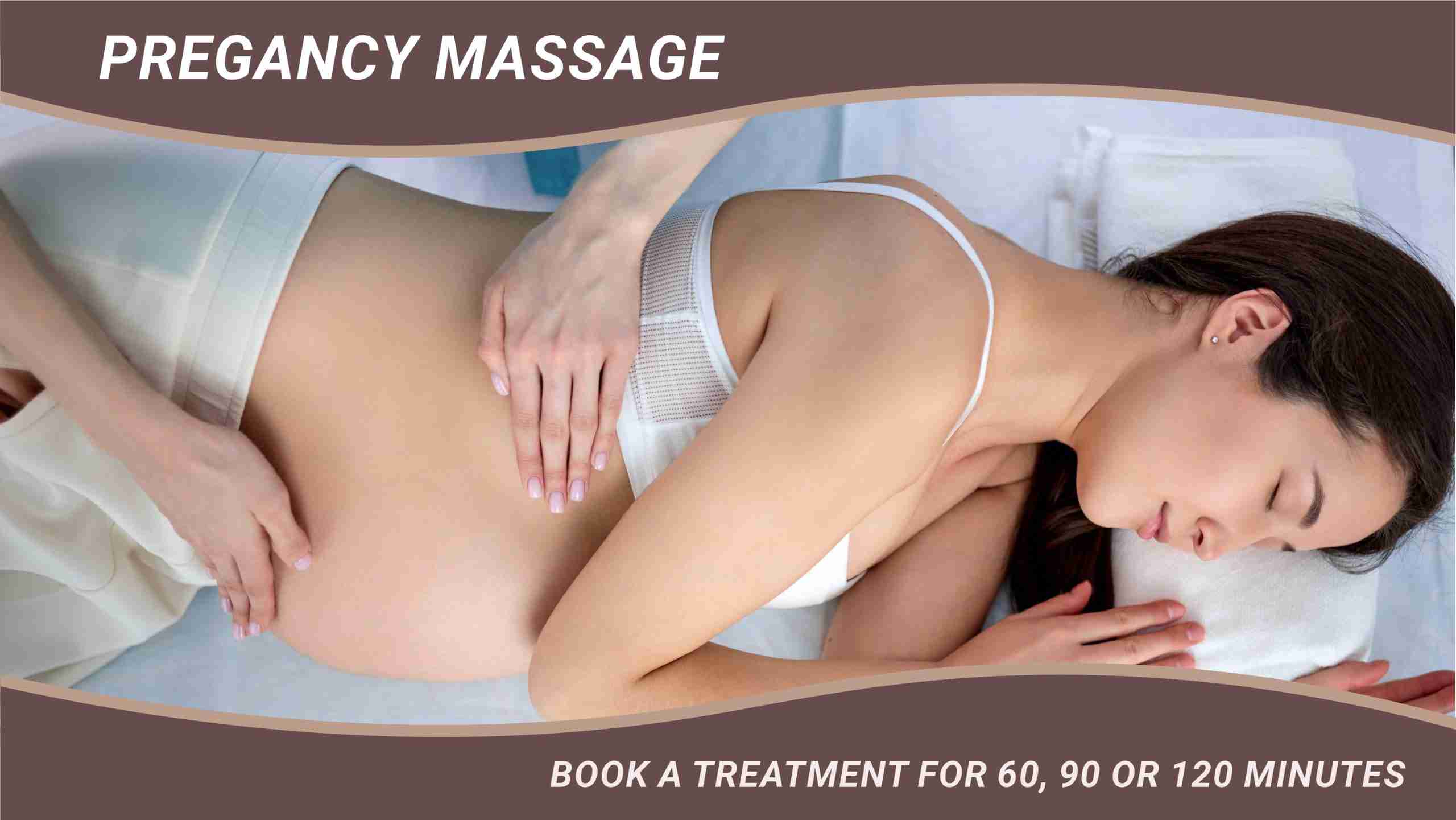
Pregnancy Massage
A relaxing experience that is perfect for expectant mothers.
This special massage is tailored to the needs of pregnant women and focuses on relieving physical tension that arises during pregnancy. Gentle, soothing strokes ease back and lower back pain, reduce swelling in the legs, and promote relaxation for better sleep.
Book an appointment for a 60, 90, or even 120 minutes session to help ease the physical and emotional challenges of pregnancy.
Pregnancy Massage...Read more
Specific Issues Addressed by Pregnancy Massage
Back and Lower Back Pain: The growing belly and changed posture during pregnancy often lead to back and lower back pain. Pregnancy massage alleviates these pains, reduces spinal pressure, and relaxes the muscles.
Swelling and Edema: Pregnant women frequently experience swelling and edema, especially in the third trimester. The massage improves blood circulation and helps in fluid drainage, thus reducing swelling and the feeling of heavy legs.
Stress and Anxiety: Besides physical changes, hormonal shifts and concerns about motherhood can increase stress and anxiety. The relaxing effect of pregnancy massage helps calm the mind and improve overall well-being.
Sleep Disorders: Many expectant mothers struggle with sleep disorders caused by the growing belly, frequent urination, or uncomfortable sleeping positions. The massage helps relax the body and promotes deeper, more restful sleep.
Breathing Difficulties: As pregnancy progresses, the growing uterus can put pressure on the diaphragm, causing breathing difficulties. The massage helps open the chest, improving breathing and increasing oxygen supply.
Headaches and Migraines: Hormonal changes and tension often lead to headaches or migraines during pregnancy. Pregnancy massage relieves tension around the neck and shoulders, reducing the frequency and intensity of headaches.
Neck and Shoulder Pain: The growing breasts and changed posture cause many pregnant women to experience neck and shoulder pain. The massage helps relax these muscles, reducing pain and stiffness.
Pregnancy Massage Technique
Pillow Support: During pregnancy massage, pillows are placed under the belly, legs, and back for comfort and proper support. This helps maintain correct posture and reduces tension.
Side-Lying Position: The side-lying position is often used in pregnancy massage as it is more comfortable and safer for pregnant women. In this position, the therapist can easily access the back, lower back, neck, and legs.
Gentle Stroking Movements (Effleurage): The most common technique involves long, gentle stroking movements to improve blood and lymph circulation, reduce edema and swelling, and provide relaxation. These movements are particularly effective on the legs, arms, and back.
Circular Rubbing: Circular rubbing movements help relax tense muscles, especially in the back and lower back area. These techniques effectively reduce back pain often experienced during pregnancy.
Pressing Movements (Petrissage): Pressing and kneading movements deeply stimulate the muscles, which is especially beneficial for tense neck, shoulder, and back muscles. These movements help relieve muscle cramps and tension.
Light Pressure on Legs and Feet: Massaging the legs and feet with light but firm pressure reduces swelling and the feeling of heavy legs, and improves circulation. However, the therapist should avoid excessive pressure, especially around the ankles, to prevent blood clot formation.
Stretching Movements: Gentle stretching movements can also be applied to the limbs to improve muscle flexibility and reduce tension. These movements help relieve muscle tension and increase the expectant mother’s comfort.
Important Information and Contraindications
Medical Consultation
Before starting prenatal massage, always consult with your doctor or midwife. This is particularly important during the first trimester or if any complications arise during the pregnancy.
Proper Positioning
The positions used during the massage should be comfortable and safe. Side-lying positions and the use of special pillows promote comfort and correct posture.
Communication with the Massage Therapist
It’s essential for the expectant mother to continuously communicate with the massage therapist and indicate if she feels any discomfort or pain. The goal of the massage is relaxation, not pain.
Hydration
It is important for the expectant mother to drink plenty of water before and after the massage to help eliminate toxins from the body and ensure proper hydration.
Contraindications
High-Risk Pregnancies
If the expectant mother has a high-risk pregnancy (such as toxemia, preeclampsia, risk of preterm labor, placenta praevia), massage is not recommended or should only be performed under medical supervision.
First Trimester
Massage is generally avoided during the first trimester, as this period is particularly sensitive in terms of miscarriage risk. If necessary, it should only be performed with medical approval.
Bleeding Problems
If the expectant mother has bleeding disorders or experiences bleeding during pregnancy, massage should be avoided.
Thrombosis and Blood Clot Formation
Due to the increased risk of blood clot formation during pregnancy, deep tissue massage should be avoided, especially in the legs. Massage could dislodge clots, which could have serious consequences.
Fever and Infections
Massage is not recommended in cases of fever, infections, or inflammations, as these conditions could worsen.
Skin Problems
Massage should be avoided in the presence of open wounds, burns, eczema, or other skin problems, as it could cause irritation.
Allergic Reactions
Massage oils and creams can cause allergic reactions. It is important for the expectant mother to inform the therapist of any allergies and use suitable products.
Tasks for the Expectant Mother Before and After the Massage
Before the Massage
Medical Consultation
Before starting prenatal massage, always consult with your doctor or midwife. This is particularly important if any complications have arisen during the pregnancy.
Informing the Massage Therapist
The client should inform the massage therapist in detail about her health condition, including any pregnancy complications, allergies, skin problems, and the current week of pregnancy.
Choosing the Right Time
The massage appointment should be scheduled so that it is not directly after a meal and preferably at a time when the client is rested and calm.
Hydration
It is advisable for the expectant mother to drink enough water before the massage to help eliminate toxins from the body and ensure proper hydration.
Comfortable Clothing
The client should wear comfortable, loose clothing that is easy to remove and put back on before and after the massage.
After the Massage
Rest
After the massage, the client should take time to rest and relax. Avoid strenuous activities and give the body time to recover.
Hydration
It is very important for the expectant mother to drink plenty of water after the massage. This helps to eliminate toxins and maintain proper hydration.
Stretching and Light Movement
Light stretching or walking after the massage can help improve circulation and relax the muscles.
Attention to the Body’s Reactions
The client should pay attention to her body’s reactions after the massage. If she experiences any discomfort or unusual symptoms, she should consult her doctor.
Discussing Future Massage Appointments
The client should discuss the next massage appointment with the therapist and consider the therapist’s recommendations regarding the frequency of treatment.
Healthy Diet and Lifestyle
To maintain the benefits of the massage, it is important for the expectant mother to follow a healthy diet and exercise regularly, as permitted by her doctor.
These tasks and tips help ensure that prenatal massage is safe and effective. This way, the expectant mother can make the most of the treatment’s beneficial effects.
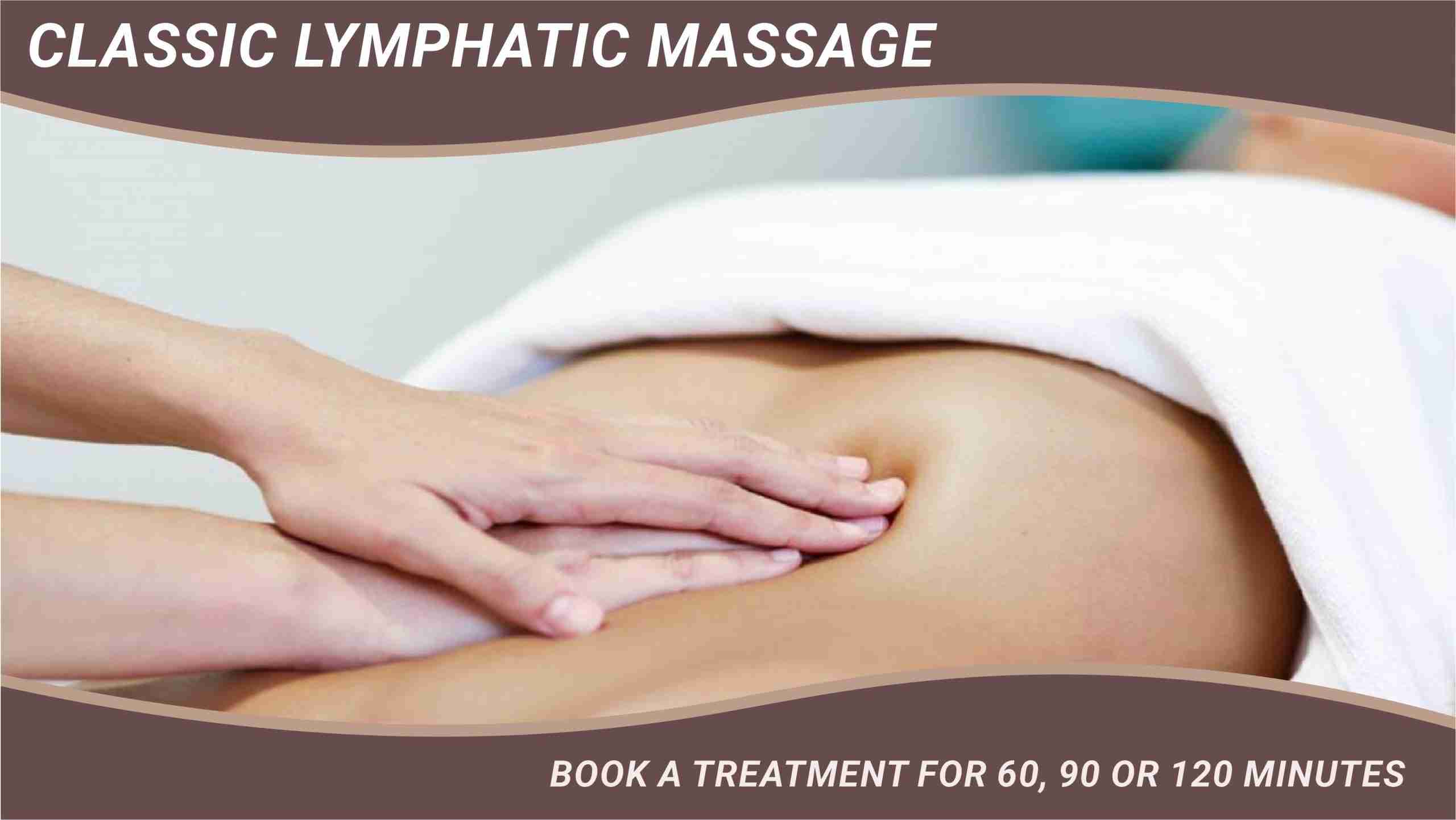
Classic Lymphatic Massage
Cleanse Your Body from Toxins
This massage supports the lymphatic system, aiding in the removal of toxins from the body. Using gentle, rhythmic movements, it stimulates lymph flow, improves immune system function, and reduces swelling. It is particularly beneficial for detoxification, reducing bloating, and enhancing overall health. This massage helps maintain optimal lymphatic function, which is crucial for a healthy immune system and the removal of toxins.
Book an appointment for a 60, 90, or even 120 minutes detox treatment.
Classic Lymphatic Massage...Read more
What Does the Classical Lymphatic Drainage Massage Help With?
Support for the Lymphatic System: The lymphatic massage stimulates the functioning of the lymphatic system, which plays a role in removing toxins and waste products from the body. It helps enhance lymph fluid flow, contributing to detoxification.
Reduction of Fluid Retention: The treatment can help reduce fluid retention and swelling, especially in areas like the legs and arms, caused by stagnant lymph fluid.
Improvement of Immune Response: Lymphatic massage can enhance immune system function by promoting the effective operation of lymph nodes and lymph vessels. A healthy lymphatic system can strengthen the body’s defenses.
Pain Relief: The massage can alleviate chronic pain conditions such as fibromyalgia or arthritis by promoting proper lymph fluid flow and reducing inflammation.
Reduction of Stress and Tension: The massage has a calming effect on the nervous system, reduces stress, and promotes relaxation, contributing to mental and emotional well-being.
Reduction of Cellulite: Lymphatic massage can help reduce cellulite by improving local circulation and decreasing toxins accumulated in fat tissues.
Improvement of Skin Tone: Regular lymphatic massage can enhance skin tone and firmness by stimulating blood flow to the underlying tissues.
Post-Surgical Recovery: The massage can be beneficial in post-surgery rehabilitation by aiding the absorption of swelling and bruises and supporting faster healing.
Sports Injuries: The treatment facilitates quicker recovery from sports injuries by enhancing lymph fluid flow in the affected areas.
Massage Technique
Gentle Pressure: Therapists apply gentle pressure, starting from the central part of the body and gradually moving towards the peripheral areas.
Circular Movements: Small, circular movements stimulate the lymph nodes and the surrounding lymph vessels.
Rhythmic Pumping: The rhythmic pumping movements used during the massage help promote lymph fluid flow.
Frequency and Important Information
Ideal Frequency: For optimal results, it is recommended to receive lymphatic drainage massage on a weekly or bi-weekly basis. Regular treatments help maintain the efficient functioning of the lymphatic system and contribute to long-term health preservation.
Stress and Fluid Retention: If you regularly experience issues related to stress or fluid retention, increasing the frequency of treatments may more effectively alleviate these symptoms.
Sports Activities: For active athletes, lymphatic drainage massage can aid in recovery and injury prevention. In such cases, weekly sessions are advisable.
Health Conditions: Before starting treatments, it is important to consult a healthcare professional, especially if you have any health issues or chronic conditions. This allows the therapist to tailor the treatment to your needs.
Allergies and Sensitivities: Inform the therapist about any skin problems, allergies, or sensitivities to avoid potential irritation or other issues.
Fluid Intake: After the massage, it is crucial to drink plenty of water. This helps flush out toxins from the body that were released during the massage.
Skin Hydration: Apply a moisturizing cream to your skin after the treatment to maintain its elasticity and hydration.
Rest Time: Allow yourself time to rest after the massage. Avoid strenuous activities so your body can fully benefit from the massage.
Stretching: Performing light stretching exercises after the massage can help maintain flexibility and reduce tension.
Communication: If you feel any discomfort or pain during the treatment, immediately inform the therapist. The goal of the massage is to ensure maximum comfort and relaxation.
Personal Needs: If you require extra attention in certain areas, let the therapist know so that the treatment can be adjusted to best meet your needs.
Contraindications
Infections and Skin Issues: Avoid lymphatic drainage massage if you have any infectious skin conditions or if your skin is damaged. In such cases, the treatment could be harmful.
Health Problems: If you have any acute or chronic health issues, such as heart failure, thrombosis, lymphoma, or cancer, consult your doctor before booking a massage.
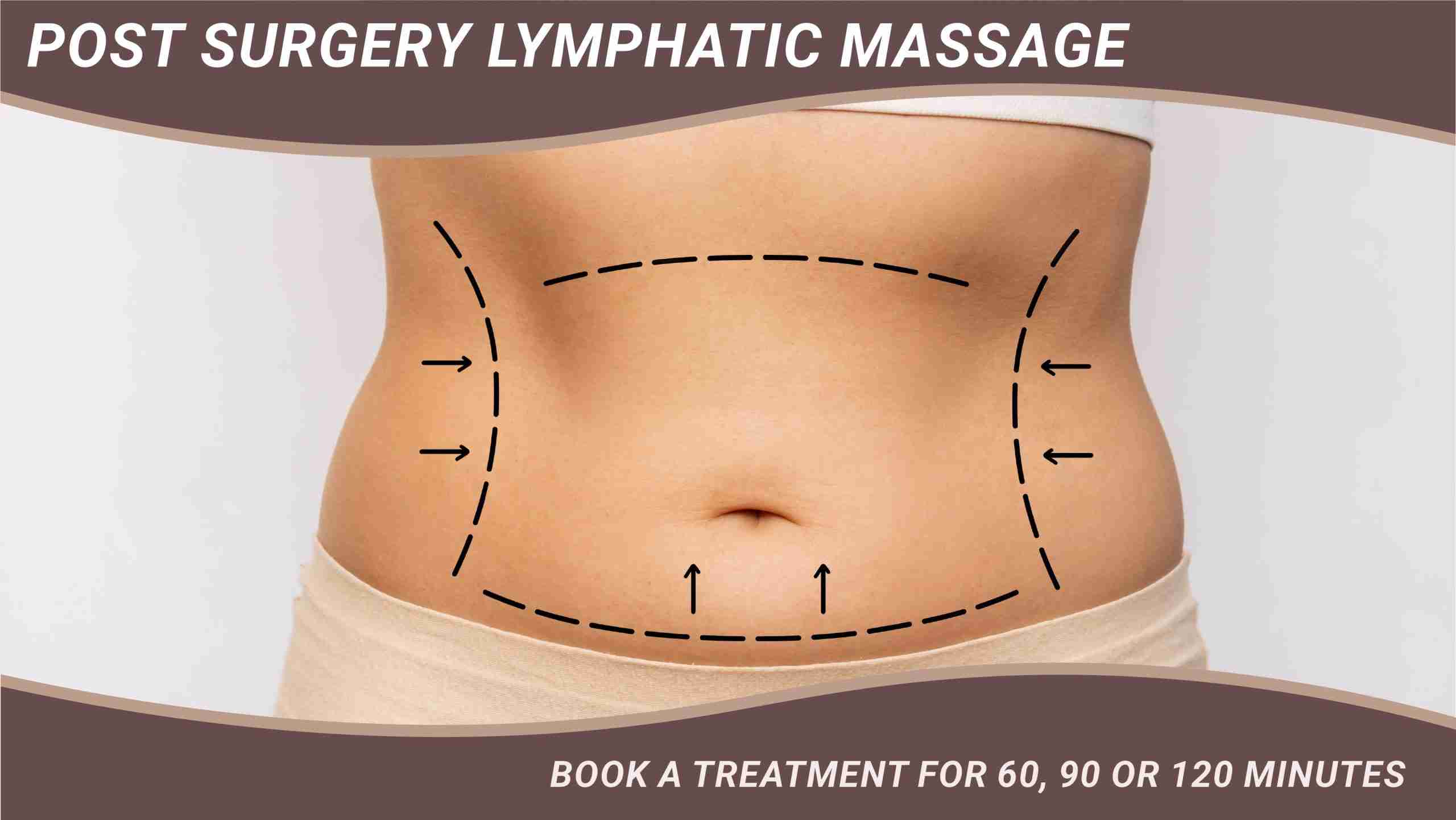
Post Surgery Lymphatic Massage
Faster Recovery and Regeneration After Surgery
The post-surgery lymphatic massage aims to accelerate the healing process and reduce postoperative swelling. This specialized technique aids in tissue regeneration, promotes faster healing, and alleviates pain. Gentle, rhythmic movements facilitate lymph fluid flow, reduce swelling, and promote cell regeneration. This massage is particularly beneficial during postoperative recovery as it helps reduce pain and inflammation.
Book an appointment for a 60, 90, or even 120 minutes health treatment.
Post Surgery Lymphatic Massage...Read more
How Does Lymphatic Massage Help After Surgery?
Lymphatic massage is particularly beneficial after surgery as it offers numerous advantages:
Reduction of Swelling: It helps reduce postoperative edema and swelling by promoting lymph fluid flow and the removal of toxins.
Accelerated Healing Process: It supports tissue regeneration and speeds up the healing process by enhancing lymph circulation and blood flow.
Pain Relief: It alleviates postoperative pain and discomfort by relaxing tense muscles and reducing inflammation.
Strengthening the Immune System: It improves the functioning of the immune system, helping the body fight infections.
Reduction of Scarring: It helps minimize scarring and promotes smooth skin regeneration.
Massage Technique
Gentle Pressure: Therapists apply fine, gentle pressure, starting from the central part of the body and gradually moving towards the peripheral areas.
Circular Movements: Small, circular movements are used to stimulate the lymph nodes and the surrounding lymphatic vessels.
Rhythmic Pumping: Rhythmic pumping motions are employed during the massage to facilitate lymph fluid flow.
Focused Areas: The massage specifically targets the area around the surgical site and the affected lymph nodes to help reduce swelling and promote healing.
Frequency and Important Information
Initial Phase: Immediately after surgery, it is recommended to have lymphatic massage 2-3 times a week to reduce swelling and pain.
Continuous Treatment: As the healing process progresses, the frequency can be reduced to 1-2 times a week.
Important Information
Medical Approval: It is crucial to consult with a doctor before starting lymphatic massage, especially in the first weeks after surgery.
Warning Signs: Monitor the body’s reactions; if unusual pain, inflammation, or skin irritation occurs, immediately consult the therapist and doctor.
Hydration: Drink plenty of water after the massage to help eliminate toxins released during the treatment.
Wound Protection: Avoid direct massage on fresh wounds and sensitive areas until they are fully healed.
Contraindications for Post-Surgery Lymphatic Massage
Postoperative lymphatic massage can only be performed safely if the postoperative condition is sufficiently stabilized and approved by a doctor. Always seek medical advice to ensure safety and effectiveness.
1. Fresh Surgical Wounds:
Reason: Treating new, open wounds poses a risk as massage can cause irritation, infection, or delayed wound healing.
Suggestion: Wait until the wound is fully healed before starting massage. Consult your doctor before beginning.
2. Active Infections:
Reason: Massaging infected areas can cause further irritation or spread the infection.
Suggestion: Only perform massage after treating active infections and ensuring complete healing.
3. Hematomas and Swelling:
Reason: Treating fresh hematomas (blood clots) and swelling with massage can cause complications like increased bleeding or swelling.
Suggestion: Avoid massage until hematomas and swelling have absorbed or decreased.
4. Heart Problems:
Reason: For conditions such as heart failure or arrhythmias, lymphatic massage is not recommended as it can affect the circulatory system.
Suggestion: Medical consultation is required before starting massage.
5. Thrombosis:
Reason: In cases of thrombosis, where blood clots form, massage is risky as it can potentially dislodge the clots.
Suggestion: Seek medical advice before massaging after thrombosis.
6. Oncological Diseases:
Reason: For cancer patients, lymphatic massage can be particularly dangerous as it might promote the spread of cancer cells, especially near the tumor area.
Suggestion: Consult your doctor to ensure it is safe before starting massage.
7. Chronic Inflammations:
Reason: Chronic inflammations, like lymphedema, can worsen or cause further irritation due to massage.
Suggestion: First, treat the inflammation with medical methods and wait for it to decrease.
8. Allergic Reactions and Skin Problems:
Reason: Skin conditions like dermatitis or eczema can cause increased irritation during massage.
Suggestion: Avoid massage until skin problems are treated and healed.
9. High Blood Pressure:
Reason: Massage can affect the circulatory system and worsen problems in cases of high blood pressure.
Suggestion: Consult your doctor before massage, especially if your blood pressure is uncontrolled.
10. Bleeding Disorders:
Reason: Conditions like hemophilia increase the risk of bleeding during massage.
Suggestion: Medical permission is required before starting massage.

Dry Cupping Therapy
Experience the beneficial effects of the ancient healing art of cupping!
This ancient Chinese method uses vacuum suction to improve blood circulation, reduce muscle tension, and assist in toxin removal. Cupping is a timeless technique that has been used for centuries to promote health and well-being. This therapeutic practice involves placing cups on the skin, which create a suction effect. This stimulates blood flow, alleviates pain, and enhances overall wellness. Whether you’re seeking relief from muscle tension, detoxification, or simply a refreshing experience, cupping offers a natural and holistic approach to achieving health.
Request an additional cupping therapy session with your treatment! 15-30 minutes of treatment time.
Dry Cupping Therapy...Read more
Cupping therapy can provide relief and improvement for various health issues. It enhances the local circulation, oxygen supply, and nutrient content of the tissues, removes stagnant metabolic byproducts and toxins, boosts the healing process, and stretches the associated fascia and connective tissue, which can lead to a relaxation response.
Specific problems for which it is recommended
Muscle Pain and Tension
Why It Helps: Cupping stimulates blood circulation and lymphatic flow in the affected area, which can help reduce tension and pain. The suction effect alleviates tension and muscle knots in deeper tissues, improving mobility.
Usage: Particularly beneficial for athletes or those who sit or stand for long periods, leading to muscle pain.
Back Pain
Why It Helps: Cupping can help relax the muscles in the back and improve circulation. It is especially effective in relieving pain and stiffness in the muscles around the spine.
Usage: Suitable for those with sedentary jobs or anyone frequently experiencing back pain.
Circulatory Disorders
Why It Helps: Cupping improves blood circulation and lymphatic flow, which can help treat blood stagnation and circulatory problems.
Usage: Useful for issues like poor circulation or swelling and pain in the legs.
Cellulite
Why It Helps: Cupping stimulates connective tissue, promotes the breakdown of fat cells, and improves skin texture. The procedure can be effective in reducing cellulite by enhancing subcutaneous circulation.
Usage: Ideal for those looking to combat cellulite, particularly in the thighs and buttocks.
Chronic Headaches and Migraines
Why It Helps: Cupping can relieve muscle tension in the scalp and neck, which may contribute to headaches and migraines. The suction effect improves blood flow and reduces tension in the head and neck.
Usage: Can be used if headaches or migraines are caused by stress, muscle tension, or circulatory issues.
Respiratory Issues
Why It Helps: Cupping can assist in clearing the airways and alleviating cough by stimulating the lymphatic system and improving respiratory functions.
Usage: Beneficial for conditions like bronchitis, asthma, or other respiratory issues, as it aids in mucus removal and airway clearance.
Stress and Anxiety
Why It Helps: Cupping has a relaxing effect that can help reduce stress and anxiety. The therapy promotes relaxation, lowers stress hormone levels, and improves overall well-being.
Usage: Useful for those dealing with tension, stress, or anxiety, providing a natural method for stress management.
Leg Pain and Muscle Cramps
Why It Helps: Cupping can help relieve pain and muscle cramps in the legs. The suction effect increases blood flow and relaxes the muscles.
Usage: Helpful for those experiencing leg pain or cramps due to prolonged standing or walking.
Cupping therapy offers solutions for many problems, but it is essential to ensure that the treatment is administered by a trained professional and considers the individual’s health condition.
Cupping TechniqueCupping is an ancient therapy that involves creating a vacuum using cups placed on the skin’s surface. The treatment generally follows these steps:
Preparation: The therapist first thoroughly cleans and prepares the area to be treated. Different types of cups may be used, such as glass, plastic, or silicone cups.
Selection and Placement: The cups are placed on the skin, and a vacuum is applied. This can be done through suction, heat (using heated air or flame), or a mechanical pump. The devices create a vacuum that exerts a pulling effect on the skin and tissues.
Duration and Techniques: The cups are usually left on the skin for 5-15 minutes. Various techniques may be applied, such as static cupping, where the cups remain in one place, or dynamic cupping, where the cups are moved across the skin.
Post-Treatment: The cups are removed, and the skin is gently massaged to stimulate blood circulation and lymphatic flow. It is important to stay hydrated and rest after the treatment.
Important Information and ContraindicationsMedical Consultation: If you have any health concerns or are planning a pregnancy, be sure to consult with your doctor before starting the treatment. This helps to avoid potential complications and ensures that the therapy is safe for you.
Communication: Maintain continuous communication with your therapist during the treatment. Inform them if you experience any discomfort, pain, or other issues.Hydration: Drink plenty of water before and after the treatment. This helps with toxin removal and maintaining proper hydration.
Contraindications:Skin Issues: Cupping is not recommended for open wounds, burns, or skin inflammations (such as eczema or psoriasis). The treatment can cause irritation and worsen the condition of the skin.
Bleeding Disorders: If you have a bleeding disorder, such as hemophilia, or if you are experiencing bleeding, cupping should be avoided. The therapy can increase the risk of bleeding.
Blood Clotting Problems: Cupping is not recommended for those with blood clotting issues, such as thrombosis or clot formation. The suction effect may exacerbate blood clotting problems.
Inflammations and Infections: Cupping is not recommended for feverish conditions, infections, or inflammations. The therapy may worsen these conditions.
Pregnancy: Cupping may be used during pregnancy in some cases, but it is crucial to seek medical approval first. The treatment should be avoided in the early stages of pregnancy or if any complications arise.
Chronic Diseases: Individuals with chronic diseases, such as heart conditions, diabetes, or autoimmune disorders, should consult their doctor first to determine the safety of cupping therapy.
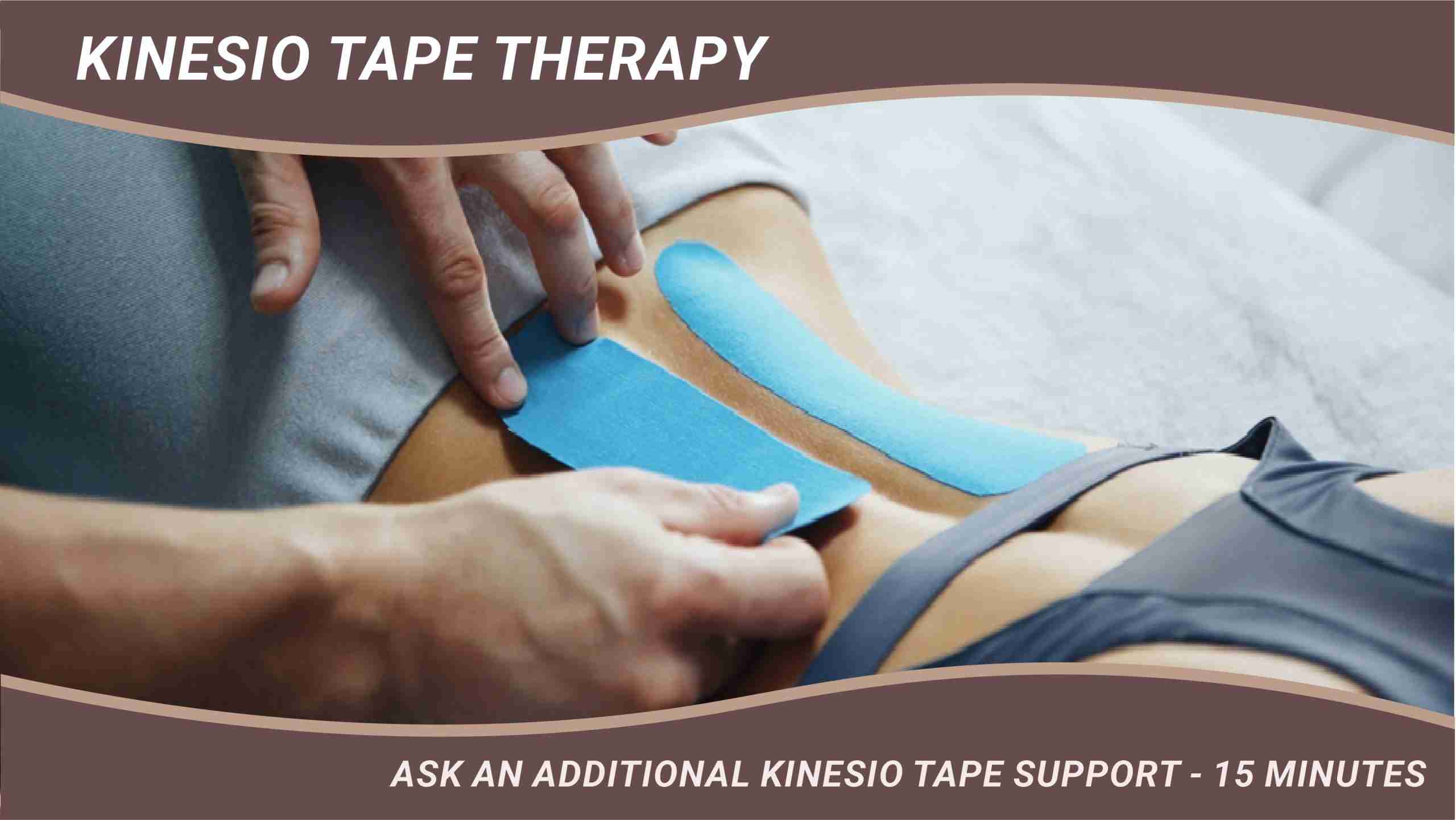
Kinesio Tape Therapy
Experience the benefits of innovative Kinesio Tape therapy!
This highly effective method uses specialized elastic bands to support natural healing. It improves circulation, fluid flow, reduces pain, and aids muscle function without restricting movement. The bands gently lift the skin, enhancing blood and lymphatic flow, reducing inflammation, and alleviating discomfort. It can be used for sports injuries, muscle strains, joint pain, and during rehabilitation.
Support your recovery and enhance your performance with this effective and versatile therapy!
Request additional Kinesio Tape support alongside your treatment. The treatment duration is approximately 15 minutes.
Kinesio Tape Therapy...Read more
What is KT Tape?
Kinesiology tape is a latex-free adhesive tape designed to replicate the functions of the human skin. Its thickness and elasticity allow Kinesio Tape to be worn without restricting movement. This makes Kinesio Tape ideal for supporting the natural healing process by assisting the fascia, muscles, and joints. Proper application of KT tape aids in the healing of soft tissues. It is waterproof and breathable, so it can be worn during exercise, showering, and even swimming to support the body.To accelerate healing and achieve better results, Kinesiology taping therapy is often recommended as a complement to treatments and mobilization training. KT tape enhances blood flow and facilitates lymphatic drainage. It is frequently used for treating sports injuries, improving posture, supporting weaker areas of the body, reducing the appearance of scars, and draining fluid from edematous (lymph-filled) and hematoma (blood-filled) areas.Kinesio Tape improves blood circulation by lifting the microscopic layer of the skin, creating space within the underlying tissue layers. This allows for more effective blood and lymphatic fluid flow, reducing inflammation and supporting the rehabilitation and healing of joints or muscles.
Specific Problems for Which It is Recommended:
Sports Injuries
Why It Helps: Reduces pain and swelling, speeds up healing.
Use: For athletes and those with an active lifestyle.
Muscle Strains and Sprains
Why It Helps: Relieves tension and improves range of motion.
Use: For rehabilitation of overworked muscles.
Joint Pain
Why It Helps: Reduces pain and inflammation, supports joints.
Use: For arthritis or chronic joint issues.
Post-Surgical Rehabilitation
Why It Helps: Aids healing, reduces swelling, improves circulation.
Use: To support recovery after surgery.
Poor Posture
Why It Helps: Improves posture, supports proper muscle activity.
Use: To correct poor posture from long periods of sitting or incorrect alignment.
Foot Pain and Muscle Cramps
Why It Helps: Relieves pain and cramps, improves blood flow.
Use: After prolonged standing or walking.
Kinesio Tape Therapy offers a quick and effective solution for various issues, supporting healing and comfort.
Important Information and Contraindications Therapeutic Purpose:
The aim of Kinesio Tape therapy is to alleviate muscle and joint pain, improve circulation, and support the healing process. The effectiveness of the treatment relies on proper technique and the selection of the appropriate tapes.
Application Method: Before applying the tape, the skin should be clean and dry. The tapes are typically left on the skin for 3-5 days and can be worn during exercise, swimming, or showering if properly secured.
Contraindications
Skin Issues
Why It Matters: Kinesio Tape is not recommended for use on open wounds, skin inflammation, or irritation, as the tapes can exacerbate the skin condition and cause further irritation.
Exception: Only apply to clean, healthy skin.
Allergic Reactions
Why It Matters: Some individuals may be allergic to the materials used in the tape, leading to skin irritation or allergic reactions.
Exception: Test the tape on a small area first to avoid allergic reactions.
Bleeding and Blood Clotting Disorders
Why It Matters: If you have bleeding or blood clotting disorders, such as hemophilia or thrombosis, using the tape may increase bleeding and is not recommended.
Exception: Consult a medical professional before starting the treatment.
Infections and Inflammations
Why It Matters: Applying Kinesio Tape during acute infections or inflammations may worsen the condition, as the tapes do not aid in healing and could hinder recovery.
Exception: Treatment should only be applied once the infection or inflammation has been managed.
Pregnancy
Why It Matters: The use of Kinesio Tape during pregnancy is not always recommended, as pregnancy may affect skin sensitivity and the circulatory system.
Exception: Seek medical advice if you are pregnant and consult with the practitioner performing the treatment.
Chronic Conditions
Why It Matters: For individuals with chronic conditions, such as heart disease or autoimmune disorders, the use of Kinesio Tape may not always be advisable as it can affect the management of the condition.
Exception: Medical consultation is required.
Always consider these factors to ensure that Kinesio Tape therapy is both effective and safe for you.
Mobility Therapy
Combined Mobilization and Deep Muscle Training
Combined Mobility and Deep Muscle Training opens a new dimension in the world of exercise, where dynamism meets stability. This innovative approach not only strengthens the muscles but also expands the range of motion, balancing the body’s flexibility and strength. During the training, you can discover deeper layers of your own body while redefining the concept and limits of movement. For those striving for the perfect balance of performance and harmony, this method is the next step on the path of personal development.
Mobility Therapy...Read more
After a successful massage, the importance of movement is a frequent topic.
- How to avoid frequently recurring unpleasant muscle pains?
- What mobility and posture correction exercises do I recommend?
Well, there are many pieces of advice and solutions, but they all share one thing in common.
- First, a serious decision must be made!
- Have a goal you want to achieve!
- Be strict with yourself to adhere to it!
- Give yourself time!
- and just… You have to do it! 😊
What do you get in return if you do this?
- Be proud of yourself for taking the first steps! (Pat yourself on the back!)
- Feel the fantastic effects of movement! (Which you may rarely feel.)
- The experience of movement is associated with a feeling of happiness! (Enjoy what you do!)
- Amp up the experiences!!
- Elegant posture shows confidence in a meeting!
- A stylish suit or a stunning dress highlights your fitness!
- Sweep admiring glances and congratulations from your family and friends!
- Over time, feel the change, which can give you even more motivation to continue.
I highly recommend it:
- In case of movement and posture problems (e.g., back and lower back pain, stiff muscles)
- Especially for those who spend a lot of time sitting
- For those with tinnitus issues (stretching and relaxing the neck area can alleviate symptoms)
- For restoring deep muscle functions
- To relieve tension in a stressful lifestyle
I motivate and support your further goals, health, and well-being with a unique combination of mobilization exercises. My methods help enhance the results achieved in muscle condition during massage with targeted active and passive muscle work. To this end, I create a personalized exercise plan that forms part of the combined program.
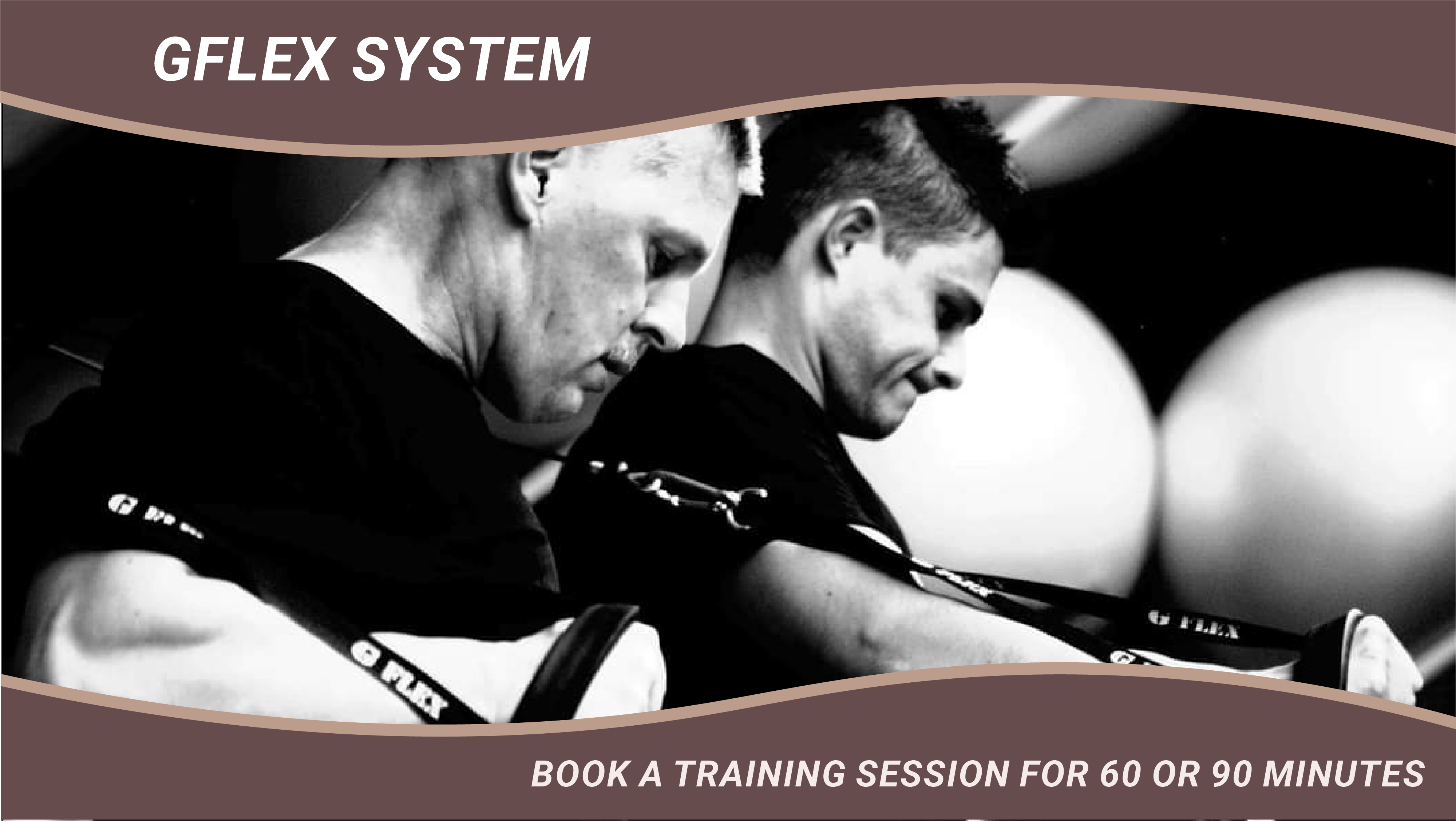
Gflex System
One of the main elements of applied movement methods.
What is the Gflex Gravity System?
Gflex is a suspendable training tool that allows performing bodyweight exercises. The device operates by using the user’s own body weight as resistance, thus the difficulty level of exercises is determined by body position and gravity. The device’s specialty lies in its use of super-strong twisted cable running through a suspended wheel, enabling exercises that isolate and develop the strength balance of both sides of the body.
Gflex System...Read more
How and where can the Gflex system help? Increasing Range of Motion and Stretching:
- Gradual stretching: Gflex allows for gradual stretching and improvement of limited mobility by adjusting the posture tilt angle. Its goal is to elongate a specific muscle group by gradually stretching the muscles and tendons. This is particularly useful for those leading a sedentary lifestyle or struggling with restricted range of motion. Example: For an office worker, regular, gradual stretching of the hip flexor muscles can help counteract the negative effects of sitting, improving hip mobility and reducing lower back pain.
- Isolated stretching: Isolated exercises improve neuromuscular control, enhancing control and coordination of specific muscle groups. The device allows isolated work with individual limbs, effectively targeting specific joint, tendon, and muscle range of motion. Increasing Muscle and Tendon Length: Isolated stretching aims to elongate a specific muscle group by gradually stretching the muscles and tendons. This increases muscle flexibility and range of motion.
Proprioceptive Neuromuscular Facilitation (PNF): This is a specialized stretching technique that increases muscle length and flexibility through muscle contraction and relaxation.
Myofascial Release: The myofascia, the connective tissue surrounding muscles, can also be stretched and relaxed. This technique helps relax stiff, tight tissues, improving muscle mobility and reducing pain.
Improving Core Muscles and Posture:
- Activation of core muscles: Gflex requires continuous stabilization, which strongly activates core muscles. This improves muscle coordination and increases muscle strength, essential for maintaining correct posture.
- Posture correction: Using the device requires maintaining correct posture, crucial for correcting incorrect habits. Continuous balance and stability maintenance help users become more aware of their body position.
Common Uses of the Gflex System:
- Rehabilitation: Gflex can be an excellent tool for post-injury rehabilitation, allowing gradual movement restoration and safe muscle stretching and strengthening.
- Improving Body Symmetry: Often, our bodies are stronger or weaker on one side. By exercising and stretching individual limbs separately, we can improve strength balance and movement symmetry.
- Increasing Flexibility: Using the system can increase muscle flexibility, reducing the risk of injury and improving athletic performance.
Additional Benefits of the Gflex System:
- Isolated Strength Development: Muscle strengthening occurs through progressive loading, resulting in gradual muscle adaptation and growth. Targeted muscle strengthening is crucial for weaker or underdeveloped muscle groups, integral to comprehensive training programs. The suspended wheel and twisted cable system allow 3D movement, enabling users to work each side of the body separately. This can be particularly beneficial for rehabilitation, correcting balance deficits, and developing symmetrical muscle strength.
For example: For an athlete, targeted strengthening of the quadriceps muscles increases leg strength and explosiveness, enhancing performance and reducing injury risk. In another scenario, for a recovering athlete, targeted strengthening of weak muscles and stretching of tight muscles can help restore full mobility and strength, accelerating recovery.
- Improving Stability and Balance: Due to the moving wheel, users must constantly stabilize themselves, enhancing balance and activating core muscles. Bodyweight exercises help increase strength and improve stability, particularly useful for everyday activities and other sports.
- Versatile Training Options: Gflex allows modification of traditional exercises and introduction of new movement forms, inaccessible with conventional strap systems. Numerous exercises can be performed with it, including pull-ups, push-ups, squats, and balance exercises. Using different body positions and tilt angles easily adjusts the difficulty level of exercises. The device enables full-body training, targeting major muscle groups and smaller stabilizing muscles alike.
- User-Friendly Design: It is easy to transport and install. Every setting is customizable, making it a perfect workout companion at home, in the gym, or outdoors. It can be used at every fitness level and tailored to every goal.
Overall, Gflex is an innovative and versatile tool that complements bodyweight training, offering additional benefits in terms of balance, stability, and muscle development.
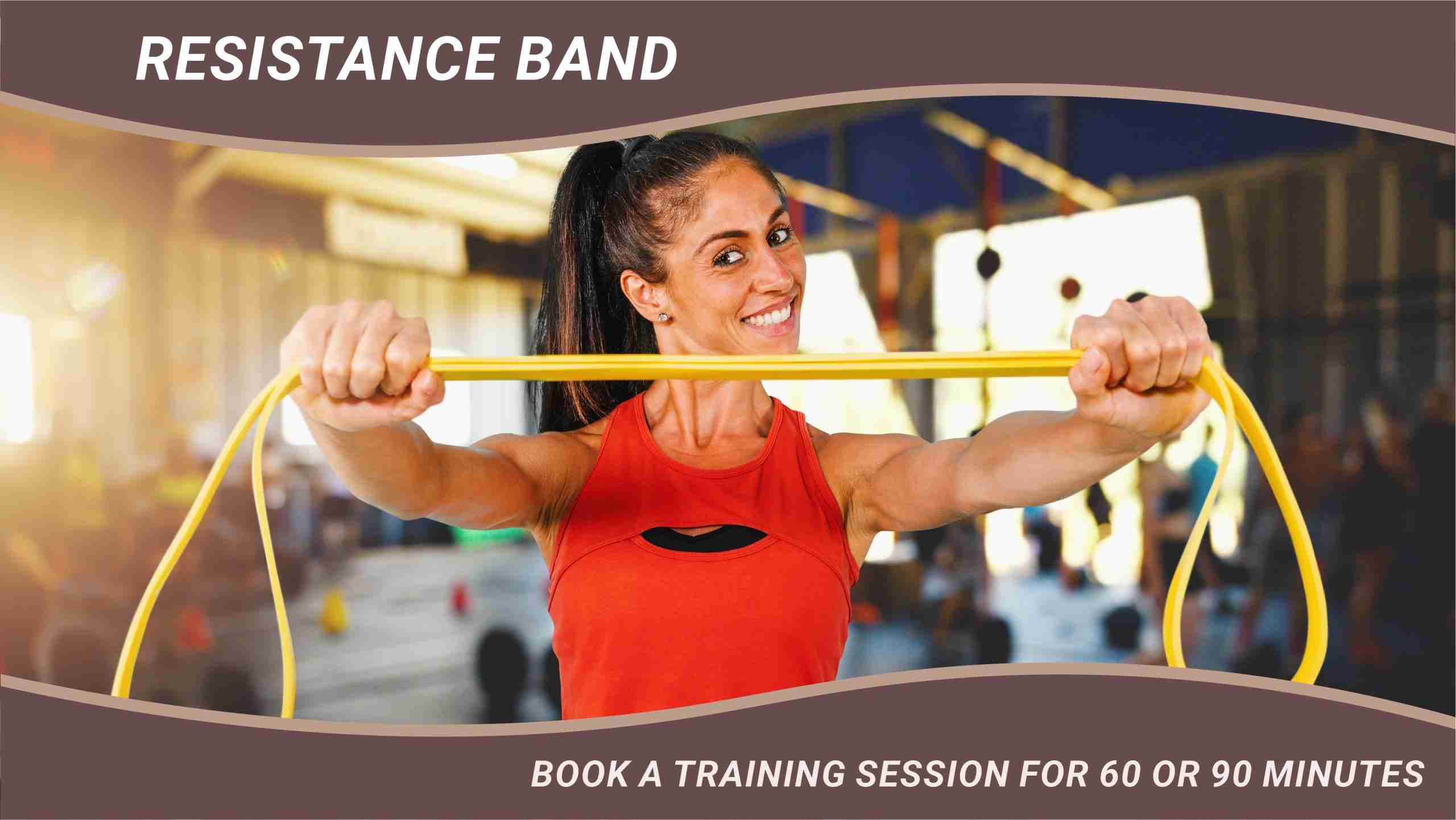
Resistance Bands
What is the Resistance Band?
Imagine having a tool in your hand that fits in your bag, is lightweight, flexible, and yet capable of bringing about powerful changes in your body, as if you were working with a complete gym. This is the resistance band, a flexible resistance strap that is gaining popularity among both beginner and advanced athletes. The bands are available in various colors and resistance levels, making it easy to adjust the intensity of exercises according to individual fitness levels.
Resistance Bands...Read more
Perfectly suits every type of movement
The magic of the resistance band lies in its extreme versatility. This tool allows for full-body training, as numerous exercises can be performed with it. With just one band, you can perform strengthening, mobilization, rehabilitation, and isolation exercises alike. Just imagine, a simple knee bend or squat with the resistance band instantly becomes more effective. As the band stretches, the muscles have to work harder, making the workout more intense and effective.
- Bands can be easily secured on various surfaces such as doors, bars, or even a tree branch, allowing you to work out almost anywhere.
- Simple setup and use allow for full-body workouts, whether at home, in the gym, or outdoors.
Fundamental tool for rehabilitation
During rehabilitation exercises, the resistance band is a fundamental tool for physical therapy and rehabilitation. They are ideal for post-injury rehabilitation, as they allow for gradual loading and safe muscle exercise. After an injury, using the band, we can gently but effectively strengthen the affected area.
For example, during knee injury rehabilitation, gradual knee extensions with the band gradually restore joint stability and flexibility while minimizing the risk of overuse. Isolation exercises can also be performed excellently with a resistance band. Imagine you want to shape your biceps. With one hand, you anchor one end of the band to the floor, while with the other hand, you pull the band upwards. Resistance changes continuously during the movement, so the muscle works in every angle, engaging even the smallest muscle fibers in the work.
Why integrate it into your workout program?
What happens when you combine resistance bands with other training methods, such as Gflex or active bodyweight stretching? Using the Gflex gravity system and resistance band together is like turning your body into a complete functional gym.
- For example, when performing pull-ups with Gflex, you can add extra resistance with a resistance band or even make the movement easier for beginners. During a full-body workout, the resistance band is excellent from warm-up to cool-down. Start your workout with light stretches and mobilization exercises using the band to prepare your muscles for exertion.
- For example, during warm-up, perform hip circles or shoulder mobilization to release tension and increase range of motion. During the main part of the workout, use the band for exercises like squats, push-ups, or pull-ups to enhance muscle work. At the end of the workout, perform stretches with the band to relax the muscles and promote recovery.




